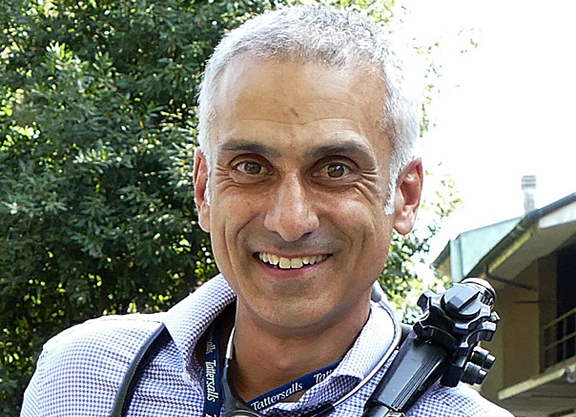NEWMARKET, UK—A conference convened partly in the wake of high-profile scratchings on veterinary grounds of several international horses from last year's Melbourne Cup has looked at ways in which racing vets from around the world can work more closely in the field of pre-race assessment.
Newmarket played host to the international gathering of veterinarians for the consensus conference on fracture risk assessment of the Thoroughbred fetlock, at which clinical diagnosis and the range of diagnostic imaging were at the forefront of a debate which also took an in-depth look at what could be deemed to be a “reasonable level of risk”.
An open session on Wednesday, which included representatives from the world of breeding, training, scientific research, insurance and raceday regulation, followed a closed debate on Tuesday between a panel of 12 vets. Along with organiser Piet Ramzan, a partner at Rossdales in Newmarket, visiting experts hailed from America, Australia and Canada, while Chris Riggs of the Hong Kong Jockey Club delivered his presentation via a video link from China.
While training and regulatory conditions vary from country to country, there was general agreement among the group that increased international collaboration in key areas would be beneficial. In particular, data gathering and assessment through a repository of diagnostic images, as well as the publication of a best practice guide were recommended in an attempt to help pinpoint those horses most at risk and reduce the risk of fatal injuries.
Ryan Carpenter of the California-based Equine Medical Centre has been at the forefront of a volatile situation at Santa Anita following the deaths of 21 horses at the track during the first two months of 2019. Nineteen of those fatalities were related to fetlock injuries. In his presentation, Carpenter outlined the changes made at Santa Anita, which included increased veterinary scrutiny of horses and the banning of riding crops at morning trackwork, adjusting rules on the use of non-steroidal anti-inflammatories, and the installation of a standing MRI scanner.
Of the importance of Wednesday's conference, he said, “Our goal is the same but I think how we get there in each individual racetrack in each country will be a touch different. I think the fact that we bring in so many different perspectives can help us obtain what we want to get to quicker, and bring more credibility to the recommendations that we want to make.”
Carpenter added, “Change is hard no matter where you are and what you're doing, but through that trial [at Santa Anita] came dramatic change and dramatic reform that could never have been accomplished before in such a short space of time. And through that we know what we did is working and now we are fine-tuning it. That's what's important to us to be able to not just say it's good enough now but to say, ok what we did worked and we can keep tweaking it and honing it. And any time you can get international collaboration it only makes the points that we are trying to get across stronger.”
Carpenter's compatriot Scott Palmer, the Equine Medical Director for the New York State Gaming Commission, pointed to the increased focus on the welfare aspects of racing through the media and social media in particular.
He said, “We're in this room right now because our social licence is in jeopardy. In the last 50 years there has been an enormous shift in our demographic.”
The need for a unified message to be delivered effectively by the racing industry as to the high level of veterinary care devoted to racehorses was another topic of debate, as was the importance of the good working relationship between trainers and vets in their daily assessment and risk management of horses under their care.
Care of Thoroughbreds of course begins from way before they enter training and reference was made to consideration of genetic traits in assessing a horse's predisposition to unsoundness.
Chris Richardson of Cheveley Park Stud represented the breeding industry at the forum and said, “We go into the breeding process in minute detail and we spend a lot of time and research into what our paddocks contain, the soil and grass analysis, and the balanced nutrition, and obviously we rely heavily on the veterinary industry. Between us we are always assessing and looking at these horses, looking at x-rays and trying to work out where we can improve and what areas may be an issue, such as OCD or bone disease in young horses and how that can be improved. The breeders do take this whole matter very seriously.”
While the achievement of a “global gold standard” for risk assessment was deemed to be unlikely, it was agreed that greater transparency in veterinary records would help regulators make more effective decisions on a horse's participation in races, particularly when shipping horses to other racing jurisdictions.
Not a subscriber? Click here to sign up for the daily PDF or alerts.






